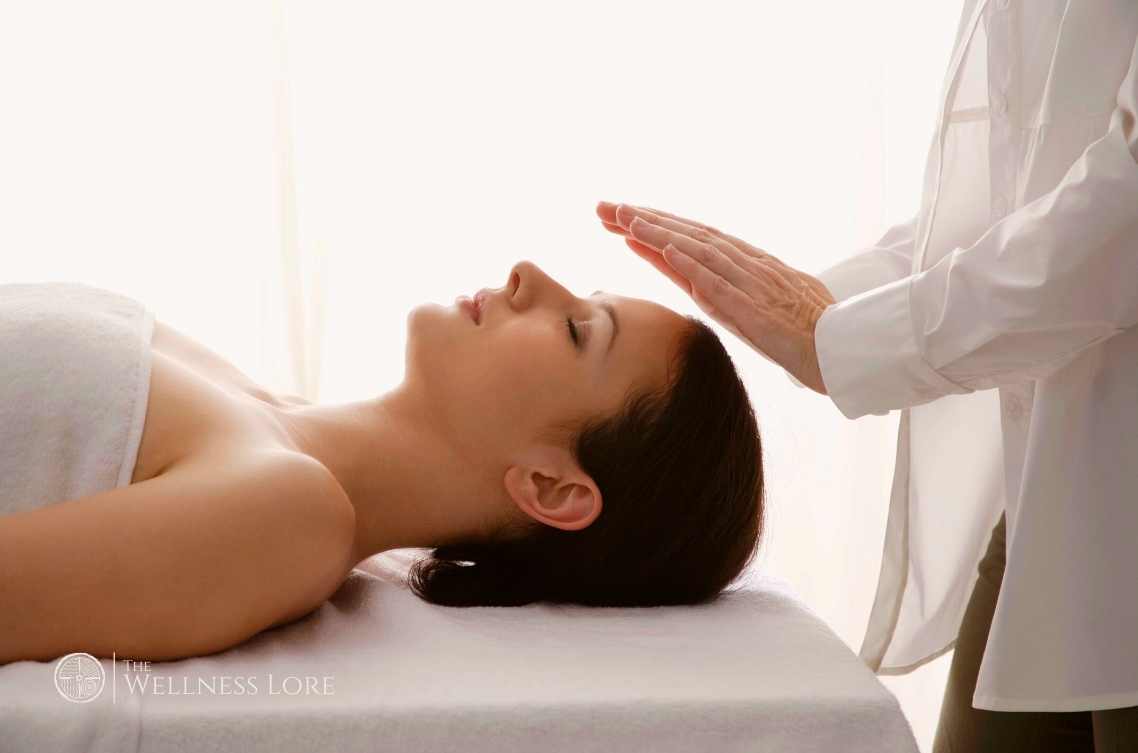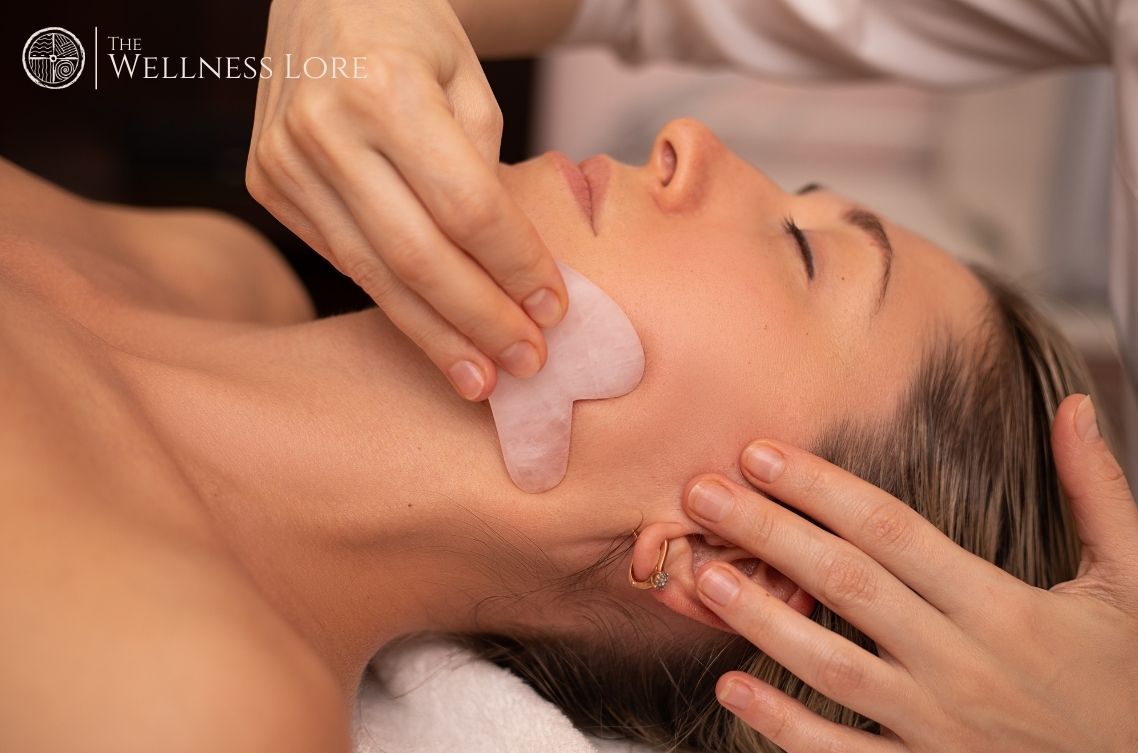Reiki

Reiki
Reiki is the Japanese technique of stress reduction and relaxation and promotes healing. Reiki is administered by placing hands on the affected area based on the idea that an unseen life force energy flows through our bodies. Reiki believes that this is the energy that causes us to be alive. When a human being’s life force energy is low, they are more likely to get sick or feel stressed. When the life force is high, they are more capable of being happy and healthy.
Meaning of Reiki
Reiki consists of two Japanese words – Rei means God’s Wisdom or the Higher Power, and Ki is the life force energy. Reiki means spiritually guided life force energy. Reiki is a treatment that feels like a wonderful glowing radiance that flows through and around you and treats the whole person including body, emotions, mind, and spirit. It creates many beneficial effects like relaxation, peace, security, and well-being. A lot of people have reported miraculous results.
Reiki Knowledge
Everyone can benefit from using the simple, natural, and safe Reiki technique for spiritual healing and self-improvement. Almost every known disease and ailment can be treated with Reiki and with a positive outcome. Additionally, Reiki aids in relieving the side effects of ailments and is used in conjunction with other therapeutic or medicinal methods.
Reiki skill is not taught in the conventional sense but rather is taught to the students through Reiki lessons. Reiki is an astonishingly simple technique to master. The power to access an endless stream of life force energy to improve one’s health and quality of life is imparted to students during an attunement process provided by a Reiki master. Reiki is not dependent on one’s intellectual capacity or spiritual development. Reiki is therefore available to everyone. Reiki has been successfully taught to thousands of people of all ages and backgrounds.
Reiki is a spiritual component and is completely independent of religious beliefs. Since Reiki is considered a form of divine energy. Many individuals have discovered Reiki helps them to connect more deeply with their spirituality than they would if they merely had an intellectual understanding of it.
A few years after developing Reiki, during meditation Mikao Usui decided to include the Reiki Ideals while practicing Reiki. The Five Principles of the Meiji Emperor of Japan, whom Mikao Usui revered, were a major inspiration for the Ideals. The Ideals were created to give Usui Reiki a spiritual balance. Their goal was to make people aware that the Reiki healing process requires one to actively choose to better oneself to heal the spirit. The student must accept responsibility for their healing and participate actively in the Reiki healing energies to have long-lasting effects.
Theories about Reiki
One widely accepted idea involves a phenomenon referred to as the biofield. Every living being has a biofield – an electromagnetic field that surrounds and permeates it. According to Ann L. Baldwin, Ph.D., a Reiki researcher and professor of physiology at the University of Arizona’s College of Medicine, this field in humans reaches 15 feet or more from the body. For instance, the heart generates an electrical field that may be detected by an electrocardiogram, or ECG, to control heartbeats. Like the heart, the brain also generates an electrical field, albeit a weaker one. In actuality, magnetic fields are produced by the positive and negative electrical charges that are produced by every cell in the body.
This theory suggests that the benefits of touch therapies like Reiki can be explained by the interplay of two human magnetic fields. The biofield is believed to be the energetic force that directs bodily functions, and Reiki energy has an impact on the biofield. According to Dr. Baldwin, the biofield is hypothesized to produce dynamic changes in its vibrational properties that modify physiological and psychological functions in living organisms.
How Reiki became popular?
Master Usui felt Reiki energy for the first time when he was on a three-week fast and meditation retreat on Mount Kurama, a revered peak to the north of Kyoto, Japan. Although he had been starving and on the verge of death due to fasting, he felt a sudden infusion of healing energy. This gave him a sensation of vigor and alertness that he had never experienced before. Usui established a Reiki clinic in Tokyo and used the therapeutic method to heal people.
Master Usui’s healing methods were first taught in Hawaii in the 1930s by Japanese-Hawaiian Reiki master Hawayo Takata, and in the 1970s it spread to the rest USA. In numerous hospitals across the United States, Reiki healing was first used by doctors, nurses, and other medical personnel in the mid-1990s. It is still used and growing today as more and more individuals discover its therapeutic effects. Reiki is employed as a supplemental therapy for surgery, cancer, and AIDS in both inpatient and outpatient hospital environments.
Before Master Usui developed his style of Reiki, known as Usui Reiki, there is evidence that previous forms of Reiki were practiced in Japan; however, these earlier forms were not well-known.
Benefits of Reiki
Practicing Reiki has benefited numerous mental and physical issues, such as sleeplessness, stress, sadness, anxiety, and pain.
- Reiki helps patients who are having surgery feel less pain, anxiety, and stress. In one experiment 46 individuals had their knees replaced as part of a 2017 study, and the researchers divided them into three groups: During their hospital stay, one group had three or four 30-minute Reiki treatments; the other two received an equal number of placebo (fake) Reiki sessions, and the third group received neither Reiki nor fake Reiki. All groups received routine medical treatment. Researchers discovered that Reiki recipients saw higher reductions in pain, blood pressure, breathing rate, and anxiety before and after surgery than the other groups.
- In another study, college students who got six 30-minute Reiki treatments reported larger improvements in stress, mood, and sleep (particularly those with higher levels of anxiety and depression), compared to the control group. This showed that Reiki also helped with mood and sleep issues. According to Cancer Evidence UK, research indicates that energy therapies like Reiki and others may help cancer patients better manage their pain and anxiety. Stress reduction is one of the key benefits of the practice which also leads to many other advantages.
- Reiki helps you regain calmness by giving your body a respite from the demands of daily life. The human body is equipped to repair any damage brought on by stress, injury, or disease when it is in a calm state of mind. According to Maute – Reiki strengthens and speeds our natural healing process by assisting a person to feel deep relaxation, so the body can stop being stressed out and focus on repairing itself.
- Studies suggest that a single Reiki session will kick start a human’s autonomic nervous system, the primitive portion of your nervous system that we don’t fully, or consciously control. It helps in transitioning from a sympathetic-dominant, or fight-or-flight, state of mind to a parasympathetic-dominant, rest-and-digest state.
- The hypothalamus, a region of your brain that is constantly processing information, sends signals to the rest of your body via your autonomic nervous system to stimulate or relax numerous biological processes like heart rate, blood pressure, respiration, and digestion. Your sympathetic nervous system produces chemicals like adrenaline and increases blood pressure and heart rate in reaction to stressors like lack of sleep, a disagreement with a friend, or even physical exertion. It also helps with the fight-or-flight response and prepares the body to deal with potential dangers. However, when your body is persistently stressed (or is activated by earlier, more acute stressful experiences, including trauma and PTSD, which might increase the risk), this response may go into overdrive. A 30-minute Reiki session with an experienced therapist and a 30-minute placebo treatment with an inexperienced therapist who imitated the Reiki treatment was given to 21 healthcare professionals with a burnout in another study. Burnout is a work-related mental health condition characterized by mental exhaustion, emotional detachment, and a reduced sense of personal accomplishment. Participants were randomly assigned to receive one of the two treatments, with no knowledge of which treatment they would receive during which session. The two treatments were separated by one week. To determine how the neurological system responded to the therapy, researchers assessed heart rate variability or the variation in the interval between each heartbeat. Researchers discovered that after receiving Reiki, heart rate variability increased, which shows through a very quantifiable physiological parameter that Reiki may aid in the relaxation of a stressed system.
Who can practice Reiki?
There are no known risks associated with receiving Reiki. Reiki has no negative effects and can never hurt somebody. But the right way to receive Reiki is through an experienced practitioner, if not Reiki can be hazardous. Reckless usage or not practicing as a professional while claiming to be a Reiki practitioner is not tolerated. Reiki is never an invasive procedure. To effectively administer the treatment, Reiki practitioners should have training from a certified Reiki master.
What to expect in your first Reiki session?
Although the duration of a Reiki session might vary, it typically lasts between 60 and 90 minutes. The entire session will be spent on a treatment table lying down. The practitioner will place his or her hands in a variety of positions on or near your body throughout the session, including your head and shoulders, stomach, and feet, among others depending on the client’s needs. Depending on the client’s requirement, each position is kept for about 3 to 10 minutes. During the session, the practitioner may or may not speak, but normally there is very little speaking. You can expect to experience intense relaxation during the session. You’ll probably daydream and you might even fall asleep.
According to the NCCIH, Reiki is a type of complementary therapy, which indicates that it should be used in conjunction with other medical and therapeutic procedures rather than as a substitute for them. Although Reiki might potentially help in any condition, it should not be utilized as a replacement for other treatments that your healthcare specialists have advised.
More Recent Stories



